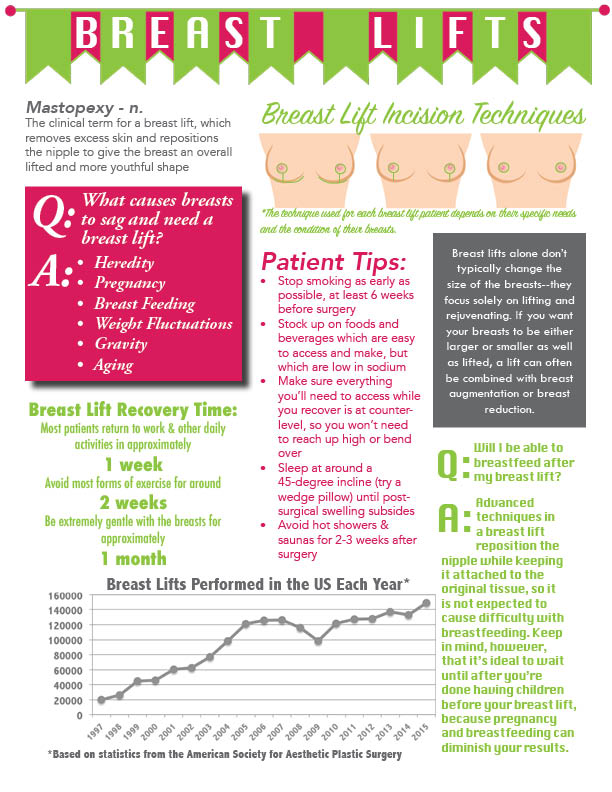 Some patients seek plastic surgery as a response to changes that have occurred in their appearance over time, while others have struggled with an aesthetic concern for most of their lives. Breast reduction patients, uniquely, could fit either description, because heredity plays a large role in breast size, but so can pregnancy, breastfeeding, weight fluctuations, and other factors. If you’re considering breast reduction surgery, one of the elements in your planning is choosing the right time to have the procedure. This can be more complex than some patients realize, so below are a few tips to help you know when the time is right for breast reduction.
Some patients seek plastic surgery as a response to changes that have occurred in their appearance over time, while others have struggled with an aesthetic concern for most of their lives. Breast reduction patients, uniquely, could fit either description, because heredity plays a large role in breast size, but so can pregnancy, breastfeeding, weight fluctuations, and other factors. If you’re considering breast reduction surgery, one of the elements in your planning is choosing the right time to have the procedure. This can be more complex than some patients realize, so below are a few tips to help you know when the time is right for breast reduction.
Consider the impact your breasts are having on your health.
While excessively large breasts can make women feel self-conscious, they can also have a significant effect on you wellbeing, often causing back problems, neck pain, numbness or tingling in the fingers or hands, and even migraine headaches and difficulty doing aerobic exercise. Many women experience these symptoms and don’t realize that they’re caused by their breast size, but if you’re noticing these struggles, you may find relief from a decrease in breast size.
Decide if and when you would like to have future children.
Practically speaking, breast surgery will last longer if it’s performed after a woman has stopped having children, because pregnancy and breastfeeding can change the size and shape of the breasts, even after surgery. However, this doesn’t mean that a 20-year-old woman needs to suffer with large breasts for another twenty years until her family is complete. The risk for breastfeeding complications is rather low, so as long as you accept that you may need revision surgery in later years, younger women who want future children can still be wonderful candidates for breast reduction. Just be upfront about any future plans and recent pregnancies in your plastic surgery consultation.
Allow your breasts to reach their natural maturity before surgery (in most cases).
Other than the changes I discussed above (pregnancy, breastfeeding, weight fluctuation), a woman’s breasts usually reach their full size around age 18. If you have surgery before the breasts are fully mature, they may continue to grow, and you may need another surgery to return them to a more comfortable size. However, in extreme cases, breast reduction might be recommended for girls under the age of 18.
Reach a stable weight before surgery.
Weight fluctuations can affect the size and shape of your breasts, which means that if you gain or lose a significant amount of weight after surgery, you may not be as happy with your long-term results. If you want to lose weight, it’s ideal to reach your goal weight before breast reduction. Not only will having plastic surgery after weight loss help your results last longer, but it may also allow you to be in better overall health at the time of your procedure, which minimizes surgical risks.
Plan your day-to-day schedule around your surgery.
As with any surgery, breast reduction requires some recovery time, and planning ahead can help you fit this downtime more easily into your life. For instance, many patients find that planning surgery around a holiday they’ll have off work, like the Fourth of July or Labor Day, allows them to take less time off to recover.
Planning for breast reduction (or any plastic surgery, for that matter) is a process, and the decisions you make will affect your safety, your results, and your overall experience. Take your time, learn about the procedure and what to expect, and feel free to consult with several plastic surgeons before you find the one that makes you feel comfortable. To start discussing how I can help you, schedule a consultation with me, Dr. Franklyn Elliott. Or, to stay up-to-date on the latest plastic surgery news, follow me on Facebook, Twitter, and Google+.



 Her breasts have changed since her last surgery.
Her breasts have changed since her last surgery.